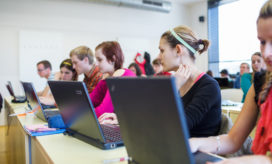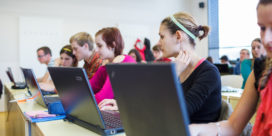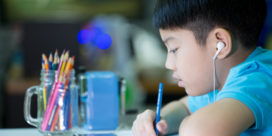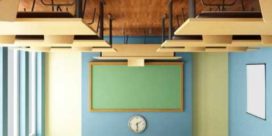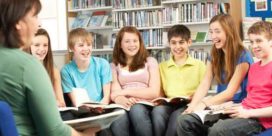Although the term “flipped learning” is almost universally recognized, teachers apply it in many forms, in all grades levels, and in various school environments. If you are a teacher using flipped learning, the chances are that you share some similarities with other teachers who flip—as well as some differences. However, the major commonality among all flipped learning teachers is that every one of them is creating personal learning experiences for each student.
We asked three flipped teachers — one from an elementary school, one from a junior high, and one from a high school — to describe what learning looks like in their world.
Beth Hobbs, third-grade teacher
Burkett Elementary, Pennsylvania
“Over the past few years, I have transformed my traditional classroom into a student-centered classroom. Through flipped learning, my students are able to complete weekly reading assignments and tasks at home to extend their learning beyond our regular curriculum.
Depending on the student’s role within each task, students question each other, share an interesting part of a reading passage, provide a summary, define new words, and connect the reading to their experiences or similar stories. Students become excited to meet and discuss their novels.
Before I moved to a flipped classroom, it would take weeks to read a novel together in class, and the discussion was led and influenced greatly by what I said. By completing the assignments at home, the students are able to form their own opinions and even challenge their classmates to look at the book through different perspectives.
With the help of exciting apps such as Chatterpix, iMovie, Adobe Voice, Touchcast, and ClassFlow, students can showcase their mastery of learning through a fun outlet. Without flipped learning, it would not be possible for me to integrate the use of such engaging apps within the classroom. Flipped learning has allowed me to go outside my comfort zone and put the learning into my student’s hands.”
Rob Baier, seventh-grade math teacher
Fort Cherry Junior and Senior High School, Pennsylvania
“How do I flip my classroom? In years past, when I assigned problems, I always had students who forgot the lesson from that day. This year, I will assign a set of problems and attach an instructional video about the lesson. The idea is to keep the instructional video less than 4 or 5 minutes long. This allows the students to be able to get a content refresher or see if they missed something.
Another way I am flipping my classroom is by keeping up on missed school days. If I am not in school or if I am pulled for a training or meeting, I post an instructional video on Google Classroom, complete with assigned problems. The same is true for possible snow days. This allows for very little, if any, missed instruction.
The final way I am flipping my classroom is assigning a video to watch as homework that will drive an important discussion or performance task for the next day in class.
Why do I flip my classroom? On snow days or days I am out of the building, I want my students to still be engaged in the learning process, and I want to evoke thought for future discussions. I want to cut down on the amount of direct-instruction time and increase the amount of time the students are actively learning. Gone are the days of “busy work” when a teacher misses school. Now, by flipping our classrooms, we can maximize instruction.”
Kalliope Tsipras, high school math teacher
Brashear High School, Pennsylvania
“I started flipping my classroom in small bits: a lesson here or there, a three-day lesson and then a week’s worth of lessons, and so forth. Over the past summer, I decided to completely flip my Pre-Calculus class and focus class time on students’ completely solving lots of problems, with lots of help from me.
I have come across some difficulties with implementation, such as not all of my students having access to computers each night. I have opened my classroom in the morning, during homeroom, and during lunch for students to come in and watch the videos. I created a survey for students to complete at the end of each video on Google Forms to gauge student understanding.
I have only started the process, and I am still learning, but being upfront with my students has helped. They are also willing to help with any issues that come up on the videos by emailing me and coming up to see me personally. Flipping your classroom only works if you are willing to be upfront and honest with yourself, your teaching, and your students. Also, keep your administrators in the loop so they know what is going on in your classroom.”
How will you flip?
If one thing is certain, the best flipped learning environments are created by teachers who are willing to learn and share from each other. Now that you have read three unique classroom experiences from teachers who are using flipping to improve their students’ learning outcomes, where do you go from here? How do you start flipping your class today?
Remember, to be a great a teacher, you don’t need a Ph.D, Ed.D., or MBA. All you need is CS: Common Sense. Do what is best for students!

